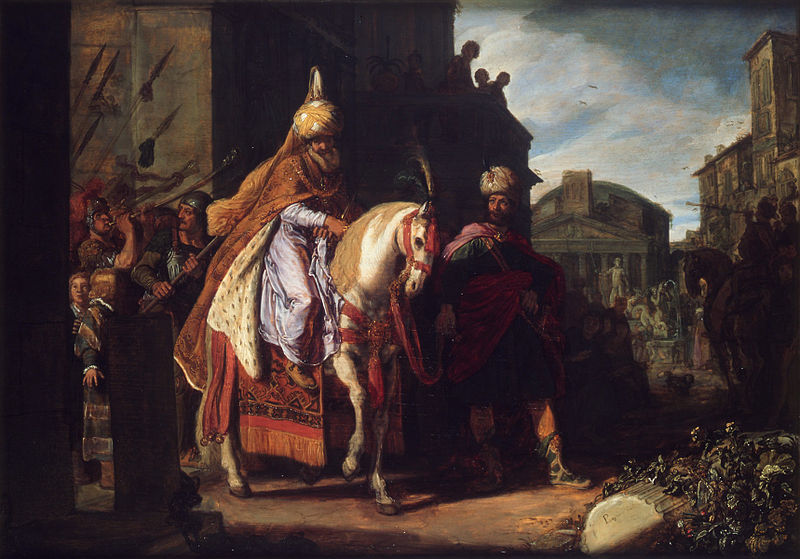Shabbat Tezaveh Shalom

by Phyllis Chesler
In the beginning, when God-the-Mother, God-the-fashionista, clothed Adam and Eve in “light” or in “smooth or furry skins” ( 3:21)—God was just getting started. By the time we’re here in Shmot, God commands Moshe to clothe his elder brother Aharon in the most kingly of garments—each item of which must be woven, sewn, polished, engraved, or hammered but only by those “who are wise of heart.” (28:3). The Cohen Hagadol may be God’s “servant,” but he also represents God’s majesty on earth. Aharon’s visible presence is meant to be wildly, exotically, colorful and intricately jeweled; according to Aviva Gottlieb Zornberg, he will be seen like a “rainbow in a cloud.”
Aharon’s apparel will consist of a breastplate, an eiphod (perhaps a skirted apron), a robe, a checkered undershirt, a turban, and a sash-belt. Their colors are to be gold, greenish-blue, dark red, and crimson (28:4-5). Aharon’s chest will also sparkle with twelve magnificent jewels in four rows: a ruby, a topaz, an emerald, a sapphire, a diamond, etc. (28:17), one for each tribe. How heavy this must be. As they say: “Kavod Kaved,” glory is a heavy burden.
Reb Jonathan Sacks (z”l) reminds us that we’ve seen both Joseph and Mordechai (here it is, just in time for Purim), dressed by kings in royal robes but both lived in non-Jewish places, in Egypt and in Persia. Here, in Aharon’s case, such raiment is not meant for the “glory and beauty of the priest.” It is meant to signify “the glory of God and the beauty of His presence…”the message of (Aharon’s) clothes was to be a signal of transcendence, to point in himself to something beyond himself, to be a living symbol of the Divine Presence in the midst of the nation.”
There’s more. As Aharon walks, little golden bells shaped like pomegranates will tinkle. According to the Ramban, the bells exist to announce Aharon’s imminent presence. One must not enter the King’s palace suddenly, lest one die. Ramban writes: “Just as we find in the case of Ahasuerus.” (It really is Purim!)
And so I think that I should consider getting dressed up a bit more when I go to shul; that the women who do so, or who at least wear a few jewels, a lacy mantilla, a brooch, a hat of extraordinary proportions, are dressing for God, not for humanity, and as representatives of God’s people. For me, this is a new thought entirely.
Shabbat Tetzaveh Shalom Yidden.